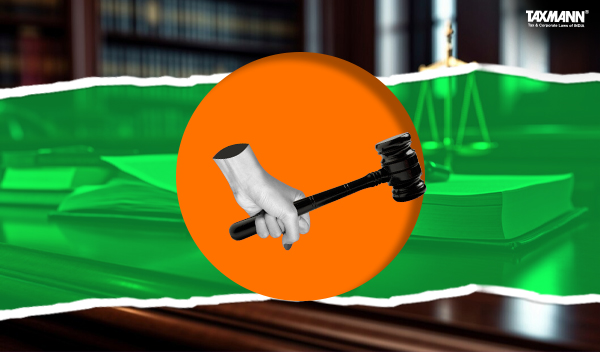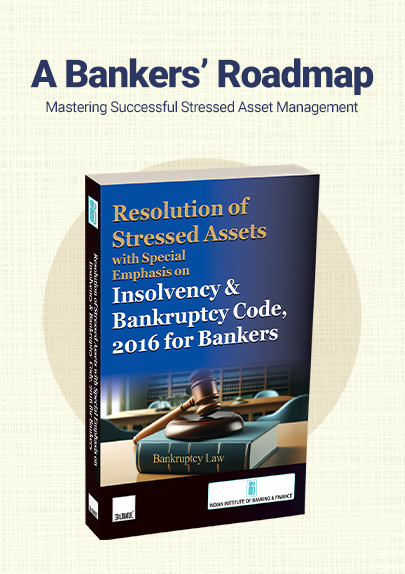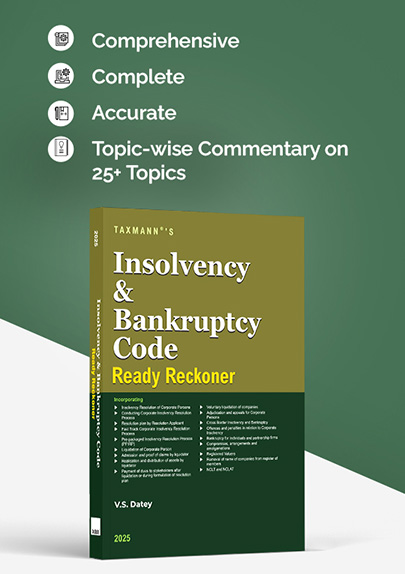Sec 101(1) of IBC Limits Moratorium Period to 180 Days; NCLT/NCLAT Cannot Extend It Further for PIRP
- Blog|News|Insolvency and Bankruptcy Code|
- 2 Min Read
- By Taxmann
- |
- Last Updated on 27 February, 2025
Case Details: Anil Kumar v. Mukund Choudhary - [2025] 171 taxmann.com 490 (NCLAT-New Delhi)
Judiciary and Counsel Details
- Justice Ashok Bhushan, Chairperson, Barun Mitra & Arun Baroka, Technical Member
-
Milan Singh Negi, Nikhil Kumar Jha & Ms Aakriti Gupta, Advs. for the Appellant.
-
Ms Purti Gupta, Ms Henna George & Ms Harshita Kakkar, Advs. for the Respondent.
Facts of the Case
In the instant case, an application under section 94(1) of the IBC was filed by the personal guarantor, and the NCLT admitted the said application, declaring an Interim Moratorium in terms of section 96 and a Resolution Professional (RP) was appointed.
RP filed an application seeking a 90-day extension of the Personal Insolvency Resolution Process (PIRP) beyond 180 days on the grounds that the repayment plan had been received and was under consideration by creditors.
The NCLT granted an extension of 90 days. However, no views were expressed on the moratorium. RP challenged the NCLT’s order on the ground that the Insolvency Resolution Process without Moratorium would render the entire exercise of personal Resolution Process as futile. Thus, the NCLT had erred in not extending the moratorium beyond 180 days, which was set to expire on 28-10-2024.
It was noted that in view of the expressed provisions of section 101(1) limiting the moratorium period to 180 days on the date when the order is passed by the NCLT for a repayment plan, whichever is earlier, 180 days from the commencement of the moratorium come to an end, and the moratorium also statutorily comes to an end and could not be extended.
NCLAT Held
The NCLAT held that the statutory scheme of section 101 of the IBC is clear and unambiguous, and there is no role of any interpretive process to find out the jurisdiction of the NCLT or NCLAT to extend the period of Moratorium beyond the statutorily prescribed period of 180 days. Thus, no extension of the moratorium could be allowed.
List of Cases Reviewed
- Order of NCLT (New Delhi) in (IB)-202(PB)/2021 in IA/5719/2024, dated 04.12.2024 [2025] 171 taxmann.com 287 (NCLT -New Delhi) (para 25) affirmed.
- Surendra Trading Company’ v. ‘Jugilal Kamlapat Jute Mills Company Ltd. & Ors.’ in (2017) 16 SCC 143
- Committee of Creditors of Essar Steel India Limited’ v. Satish Kumar Gupta & Ors.’ reported in (2020) 8 SCC 531 Vikas Gautamchand Jain’
- P. Mohanraj & Ors.’ (para 24) distinguished.
List of Cases Referred to
- ‘Surendra Trading Company’ v. ‘Jugilal Kamlapat Jute Mills Company Ltd. & Ors.’ in (2017) 16 SCC 143 (para 23).
Disclaimer: The content/information published on the website is only for general information of the user and shall not be construed as legal advice. While the Taxmann has exercised reasonable efforts to ensure the veracity of information/content published, Taxmann shall be under no liability in any manner whatsoever for incorrect information, if any.

Taxmann Publications has a dedicated in-house Research & Editorial Team. This team consists of a team of Chartered Accountants, Company Secretaries, and Lawyers. This team works under the guidance and supervision of editor-in-chief Mr Rakesh Bhargava.
The Research and Editorial Team is responsible for developing reliable and accurate content for the readers. The team follows the six-sigma approach to achieve the benchmark of zero error in its publications and research platforms. The team ensures that the following publication guidelines are thoroughly followed while developing the content:
- The statutory material is obtained only from the authorized and reliable sources
- All the latest developments in the judicial and legislative fields are covered
- Prepare the analytical write-ups on current, controversial, and important issues to help the readers to understand the concept and its implications
- Every content published by Taxmann is complete, accurate and lucid
- All evidence-based statements are supported with proper reference to Section, Circular No., Notification No. or citations
- The golden rules of grammar, style and consistency are thoroughly followed
- Font and size that’s easy to read and remain consistent across all imprint and digital publications are applied






 CA | CS | CMA
CA | CS | CMA


